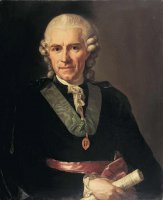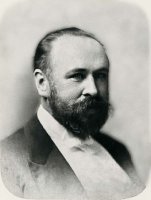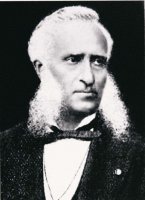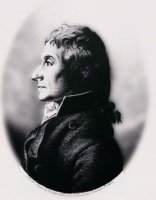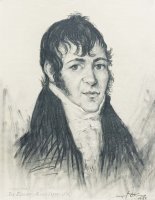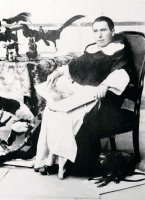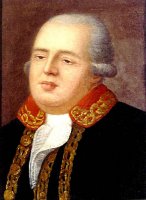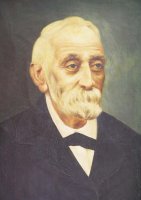Tobern Olof BERGMAN (1735-1784)
Celebrated Swedish scientist and a respected and renowned professor at the University of Uppsala. He developed several branches of science and made important contributions in the field of inorganic chemistry. He made noteworthy contributions to mineralogy and should be considered a PIONEER in the classification of minerals according to their chemical composition. He also carried out studies on chemical affinity, and his tables were doubtless the most complete of the time.
Richard Bowdler SHARPE (1847-1909)
An English zoologist who specialised in the study of birds, he was the ornithologist responsible for the avian collections in the British Museum. He showed special interest in taxonomy and phylogeny throughout his brilliant professional career. His huge body of work made a notable contribution to increasing zoological KNOWLEDGE, and was reflected in hundreds of specialist books and articles. This includes his principle work: the Catalogue of the Birds in the British Museum (27 volumes).
Pierre François CHABANEAU
XVIII. mendeko kimikari ospetsua; platinoa purifikatzeko lehen metodo eraginkorra aurkitu zuen.
Mariano de la Paz GRAELLS (1809-1898)
Professor of zoology in the Museum of Natural Science in Madrid as well as its director, Graells was an internationally prestigious naturalist. He worked in academia, and following decades of scientific lacklustre was responsible for the rebirth and REVIVAL of natural science in Spain in the 19th century. In addition to research he promoted the cataloguing of animals and plants, and he trained and managed naturalists.
Louis Joseph PROUST (1754-1826)
With a great aptitude for research, the French scientist L. J. Proust was professor of chemistry in the Seminary in Bergara. During that time, he published his Introduction to the chemistry course and three reference notes on heavy spar, cobalt and bile composition in the Extracts of the General Meetings of the Basque Society of Friends of the Country. He also organised and launched the Laboratorium Chemicum in Bergara.
Juan Jose ELHUYAR (1754-1796)
This eminent 18th-century chemist was the main figure in a strategic industrial-military espionage mission as part of a scientific development project led by the Royal Basque Society. Along with his brother, Fausto, he DISCOVERED a previously unknown chemical element: tungsten.
Juan González ARINTERO (1860-1928)
Dominican priest, he studied Science and was a professor at Bergara (1886-1892). Naturalist, apologist, theologian, important ecclesiologist and one of the greatest european mystics of the beginning of the XX century. He was concerned about proving the compatibility of science and faith, and he projected a “Center for Further Scientific Apologetic Studies” at the Royal Seminary and he enriched the zoology department.
Fausto ELHUYAR (1755-1833)
1772-1777 bitartean Kimika ikasketak egin zituen Parisen Hilaire-Marin Rouellerekin, Juan Joserekin batera. Hiru urtez Freiberg-en, Abraham Wernerekin ikasten ibili ostean, Bergarako Errege Seminarioan Mineralogia irakaskuntzaren kargua hartu zuen. Denbora tarte horretan, bere anaia Juan Joseri lagundu zion Wolframa isolatzeko ikerketetan, eta Chabaneau-rekin platinoa landu zuen.
Basque Enlightenment: founders and managers
During the second half of the 19th century, the basque economy started to sink and was leading to a deep crisis. A number of basque lords went abroad to Europe to finish their Further Studies and realized that the country was falling into the abyss. They quickly imbued themselves with the ideas of the Illustration that were spreading across Europe. They concluded that in order to be able to escape the crisis, they needed to use reasoning, and thus it was essential to boost quality education and scientific investigation.
Carlos URIARTE FURIRA (1819-1897)
Architect, and author of the Bergara Court and Prison project. His COMMITMENT and DEDICATION to the Royal Seminary and to the Secondary Education Institute were unflinching. He was linked to the institution for more than 50 years, from 1846, when he was appointed professor of mathematics, until his death in 1897. He lectured in the Industrial College as well teaching in the Institute, and from 1871 was director of the Provincial Institute of Gipuzkoa, first at its Bergara site and later in San Sebastián.


